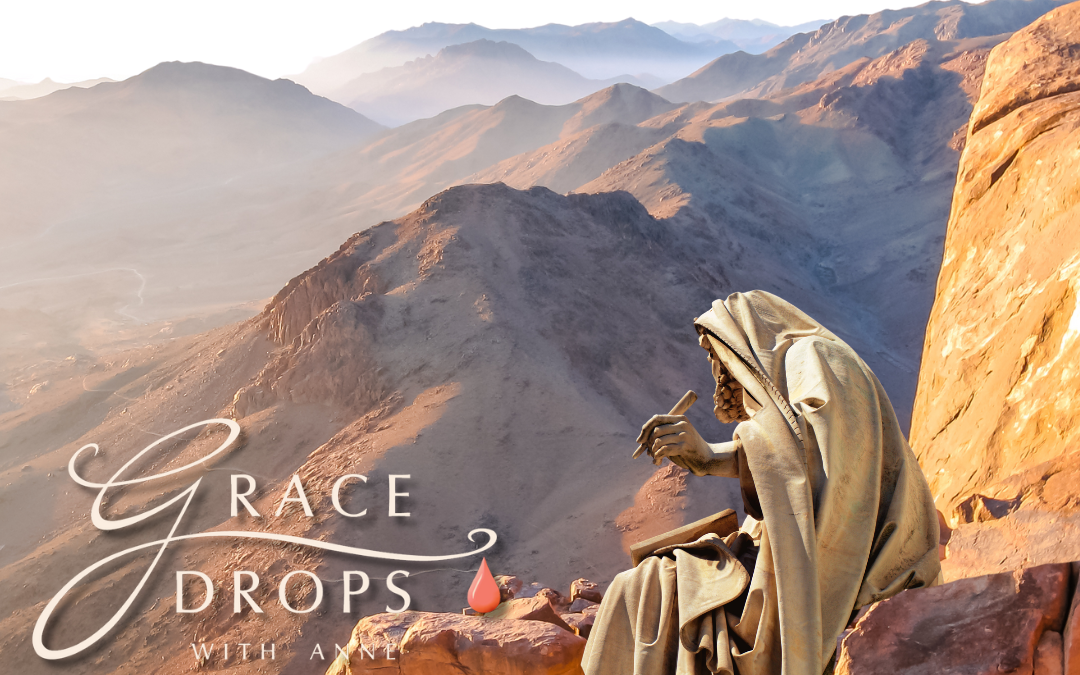When I initially realised that the first and last chapters of John’s gospel are about the passing of Elijah’s mantle, I was surprised and delighted. When I later realised that the second and second-last chapters were about the passing of Joseph’s mantle, I was stunned. But I was also suspicious. Would the third and third-last chapters be similar? Was there another mantle? Whose would it be? Who would it be passed to?
Fortunately, the answers to these questions were lying on the surface. The only person mentioned both front and back is Nicodemus. And Jesus talks to him about Moses.
Just as Moses lifted up the snake in the wilderness, so the Son of Man must be lifted up.
John 3:14 NIV
So, if any mantle is being passed on by Jesus, it’s clearly that of Moses and it’s being given to Nicodemus. Unfortunately, as soon as Moses is mentioned, we’re naturally going to think of the Torah and the Ten Commandments. The temptation we face is to think that, to inherit the mantle of Moses, Nicodemus would have to repeat some of his feats.
But this is a misunderstanding of mantles. They’re not given to us to duplicate the works of those who have gone before, but to amend their mistakes and advance their unfinished assignments towards completion. Now, only Jesus as the Finisher of our faith can truly fulfil all aspects of such missions but we are called to bring them as close to completion as we can.
Now, unlike Elijah and Joseph, it doesn’t require any digging to know where the spiritual repair job was needed in Moses’ life. He was famously barred from entering the Promised Land because he struck a rock to produce water instead of speaking to it. It seems like thoughtless disobedience, but in fact it was a highly insulting gesture of defiance towards God.
Moses took the rod he struck the rock with from the place of the Presence in the Tabernacle. It was therefore Aaron’s staff with its buds and blooms and almond kernels in their shells, all on the one rod. It showed three seasons of growth together; it was an anomaly of time, a wonder, a specific sign of God’s favour to Aaron. Through it, a rebellion had been quelled. There’d been dissension and conflict over the choice of Aaron as high priest, but the appearance of the buds, flowers and nuts on his staff and no other candidate’s settled the dispute.
The rod—a symbol of averted rebellion—was used by Moses to enact rebellion against God. That was bad enough. But striking a rock made it worse. Because that symbolised refusal of covenant.
Moses, you see, was being asked to draw water. That invoked his name. Moses, an Egyptian name meaning drawn from the water, had an inbuilt dedication to the Nile-god. For forty years, God had been offering Moses chances to accept a name covenant and adopt a Hebrew name. But here Moses publicly and finally repudiates God’s latest offer.
The Promised Land was not for Egyptians, it was for the Hebrews. Unless Moses gave up his foreign identity, the land was not his to inherit. His mistake was getting irritated with the Israelites about the need for water and then lashing out at God as a consequence.
These were the errors Nicodemus had to avoid if he was to have any hope of successfully repairing the legacy of Moses. John doesn’t tell us how Nicodemus did this. That’s because he didn’t need to spell it out for a first century audience. The story of Nicodemus supplying the water for the people was so famous back in the day that it was entirely unnecessary.
This is Grace Drops; I’m Anne Hamilton. Join me next session for the story of Nicodemus, an anomaly of time and a miraculous provision of water.

Thank you to Lorna Skinner of www.riversofmusic.co.uk for the background music.
Moses’ mantle will be featured in The Lustral Waters: John 3 and 19: Mystery, Majesty and Mathematics in John’s Gospel #3. Available late 2024.


Made so much sense now Anne why Moses didn’t get to Cannan, the promised land. Oh! I thank the Lord for your life Anne.
“These were the errors Nicodemus had to avoid if he was to have any hope of successfully repairing the legacy of Moses. John doesn’t tell us how Nicodemus did this. That’s because he didn’t need to spell it out for a first century audience. The story of Nicodemus supplying the water for the people was so famous back in the day that it was entirely unnecessary.”
I don’t recall the story of Nicodemus supplying water for the people at all, where is that in scripture or even in history??? I do know he supplied a fortune of spices for the body of Jesus, but water??? Can you please expound on this, Anne?
Coming next week. All will be revealed in Session 110.
I never thought mantles not given to us to amend their mistakes and advance their unfinished assignments! It blows my mind.
I follow your FB page. I love learning from the revelation the Lord is giving you!
Thank you!
Thank you so much my sister, you are making such a difference in my understanding of the word. Thank you for sharing your knowledge and indeed may His glory fill the earth .
Blessings, Blessings 🙌